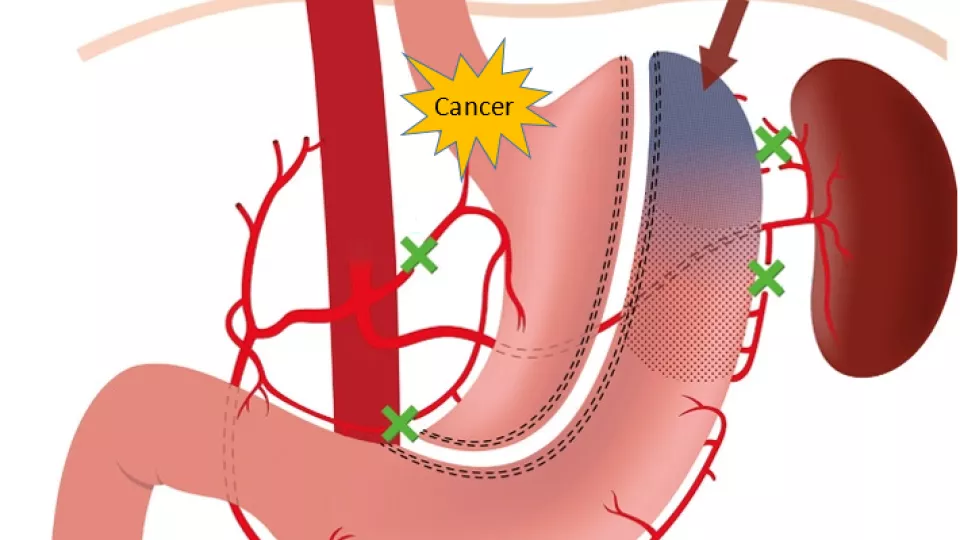Cancer in the esophagus is one of the most increasing types of cancer in the western world, and often surgery is the only treatment. In this treatment, part of the esophagus is removed, and the upper stomach is reconstructed to splice together with the remaining esophagus. In 15-25% of all patients, the joint fails to heal well, leading to severe inflammation and/or sepsis, which are difficult to fix and potentially life-threatening.
In this project, we will study the blood circulation around the joint after esophageal surgery to see if we can detect problems with healing earlier. We will add a substance to the blood that fluoresces (=starts to glow) when illuminated by a certain type of infrared light. By illuminating the joint with infrared light through an optic fiber and then photographing an image of the so-called fluorescence light from the injected substance, indocyanine green, in the blood, we hope to be able to measure and early identify problems in the blood circulation that may be the first sign of problems in the healing of the joint.
This will help doctors identify and fix problems with healing after gastric surgery at an early stage, which will improve the survival rate and recovery of patients with esophagus cancer.


